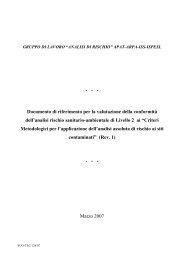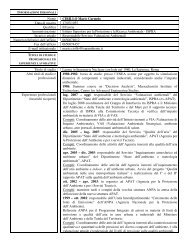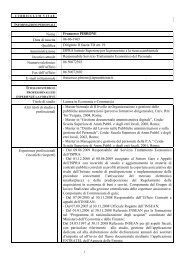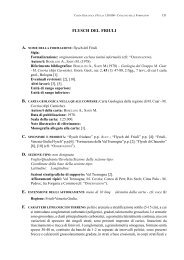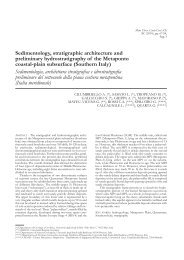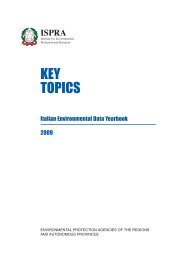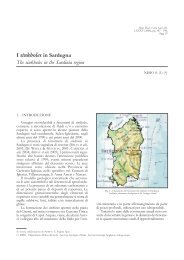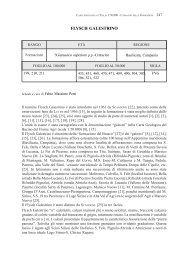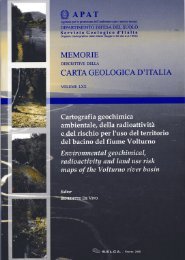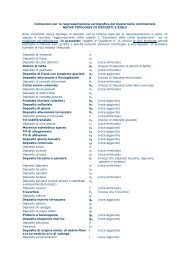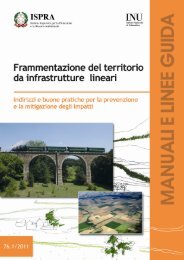Guidebook - Ispra
Guidebook - Ispra
Guidebook - Ispra
Create successful ePaper yourself
Turn your PDF publications into a flip-book with our unique Google optimized e-Paper software.
THE APULIA CARBONATE PLATFORM-MARGIN AND SLOPE, LATE JURASSIC TO<br />
EOCENE OF THE MAIELLA MT. AND GARGANO PROMONTORY:<br />
PHYSICAL STRATIGRAPHY AND ARCHITECTURE P18<br />
Figure 4.3.1 - Simplifi ed stratigraphic column of the<br />
Monte Acuto Formation (after Neri, 1993).<br />
They are present in the lower part of Member 2<br />
of this stratigraphic unit, where the occurrence of<br />
Campanellula capuensis permits to date this interval<br />
to late Hauterivian-early Barremian time (Claps et al.,<br />
1996). Footprints occur in an easily recognizable layer<br />
composed mainly of peloidal wackestone-packstone<br />
with a cap of very thin (2 mm) green clay in which<br />
the reptiles “passage” was impressed. This lithofacies<br />
lies on a 40 cm thick bed extremely bioturbated with<br />
burrows fi lled by green and pink clay (Figure4.4.4).<br />
Other footprints have been found on top of a different<br />
layer composed mainly of bioturbated wackestones<br />
with some emersion features on top (oxidation<br />
fi lms and locally black-pebbles). Preliminary study<br />
on footprints and short tracks testifi es the presence<br />
of middle to large-size bipedal dinosaurs, whit a<br />
foot length ranging from 15 to 40 cm. Some of the<br />
footprints can be attributed to theropods, others could<br />
be also theropodan or iguanodontian and sauropods.<br />
The above described dinosaur evidence suggests that<br />
a considerable portion of the ACP was emergent and<br />
supported the dinosaurs population with food and<br />
fresh water. The ACP and the associated Adriatic<br />
block have been considered since the beginning of<br />
the last century as a nose, a promontory of the Africa<br />
continent (plate). But all the most recent paleotectonic<br />
reconstructions consider Apulia an independent<br />
Figure 4.3.2 - The pelagic interval above the Monte S. Angelo Fm, abruptly overlain by gravity-displaced debrites. The<br />
erosional contact represents the downlap surface of the prograding depositional system of the Monte Acuto Fm (road<br />
Manfredonia-Monte S. Angelo).<br />
37 - P18<br />
Volume n° 3 - from P14 to P36



